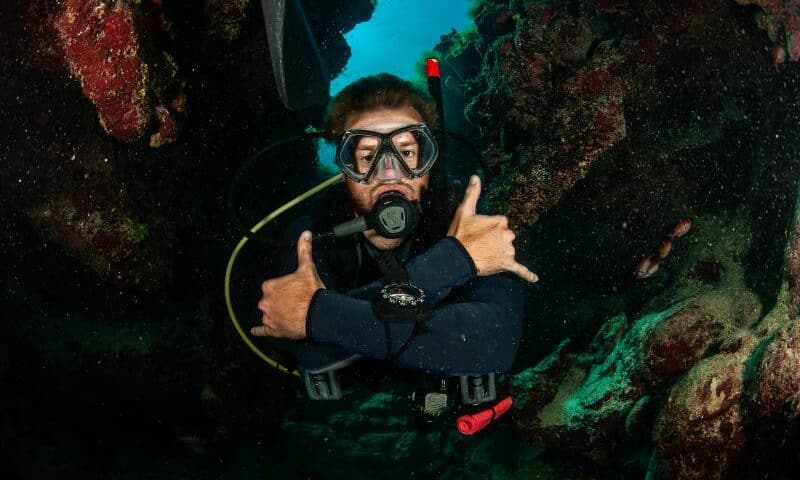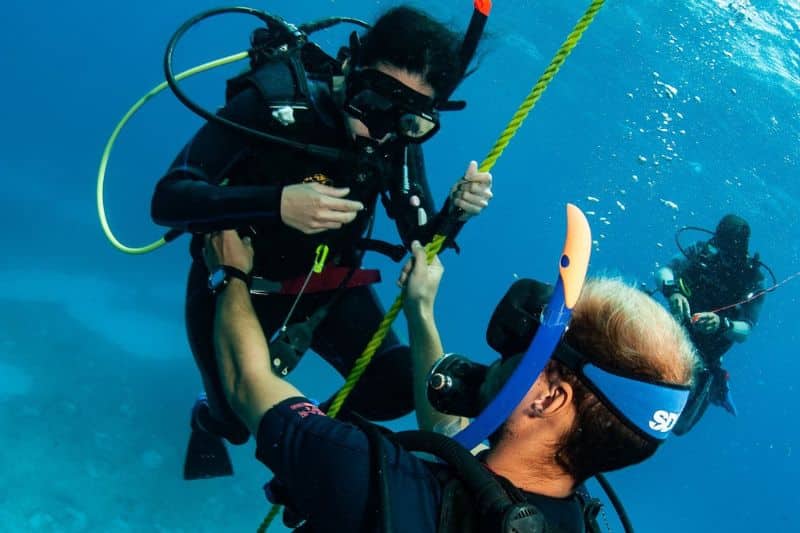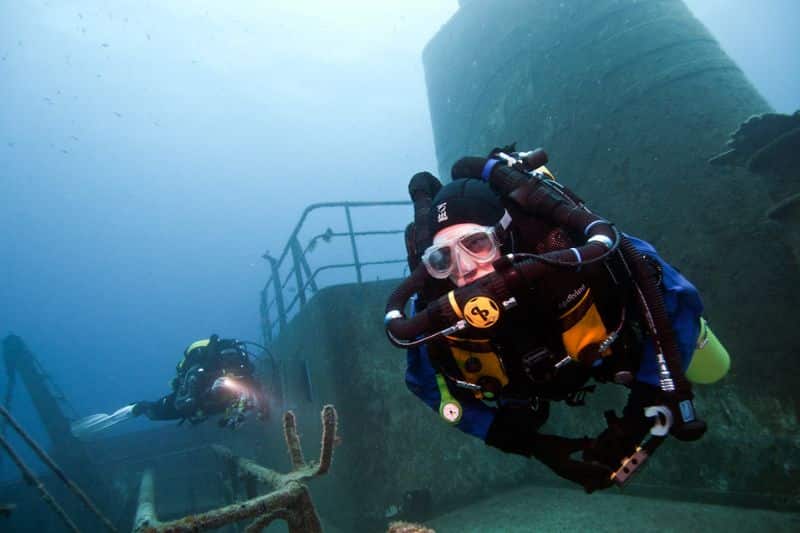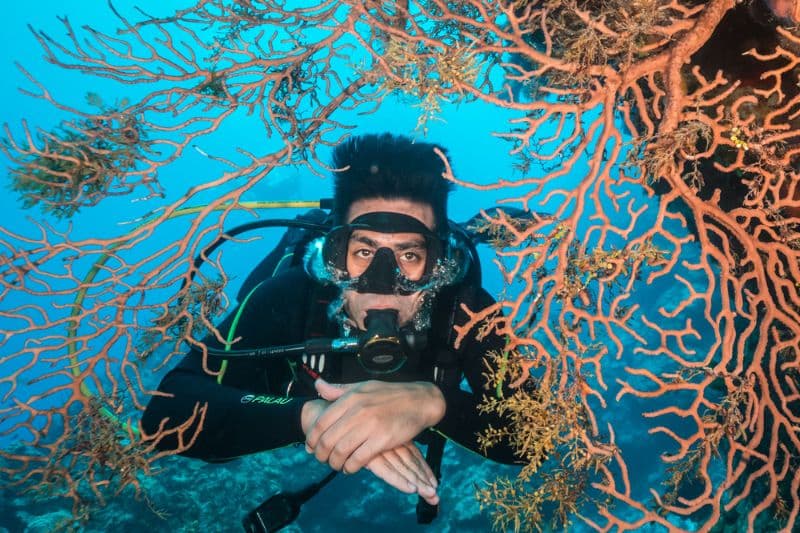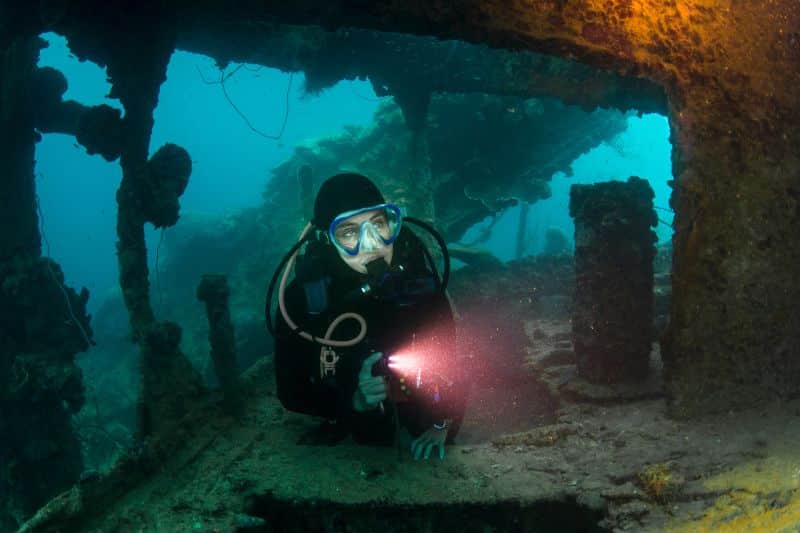4. How to Avoid the Bends While Scuba Diving
Let’s get something straight: the bends, aka decompression sickness (DCS), is one of those things you don’t want to mess with. It’s not just about how deep you dive; it’s all about how you ascend, how fast you do it, and whether you’re taking all the necessary precautions.
Dive with peace of mind, enjoy, have fun, and follow a few simple yet essential steps to avoid the bends while diving.
Here’s how to do it:
- Ascend Slowly: Your Lifeline to Avoid the Bends
The number one rule to avoid the bends? Ascend slowly. The faster you rise, the more you’re playing in its favor.
Don’t rush it. Your ascent should never be faster than 9 meters (30 feet) per minute. It’s not about impatience; it’s about keeping the bends far away. And by the way, make sure to exhale continuously while you ascend. It helps release the nitrogen properly. So, slow down, breathe out, and ascend.
“A simple rule? Don’t ascend faster than your smallest bubbles.”
—Stephen, Dive Instructor
- Safety Stops Are Your Best Friends
Safety stops aren’t just a suggestion—they’re crucial. After diving deep, you need to give your body time to off-gas that nitrogen safely. This is where the safety stop comes in. It’s a brief pause at 5 meters (15 feet) for about 3-5 minutes before you hit the surface. Think of it like a pit stop for your body to get rid of excess nitrogen.
- Plan Your Dive with Tables or, Even Better, Dive Computers
You wouldn’t drive without a map, right? Same goes for scuba diving. Whether you’re using dive tables or a dive computer, planning your dive properly is a must to avoid the bends. These tools help you understand how deep you can go, for how long, and what your ascent should look like.
Dive computers take it a step further. They track your depth, time, and nitrogen load in real-time, making it easy to avoid exceeding safe limits. You’ll know exactly when it’s time for your safety stop and how fast you should ascend. If you’re serious about avoiding the bends, make sure you use these tools every time you dive.
- Hydrate and Stay Healthy to Avoid the Bends
Hydration is your secret weapon. If you’re not hydrated, your body struggles to eliminate nitrogen effectively, putting you at higher risk for decompression sickness. It’s simple: drink plenty of water before and after your dive, and make sure you’re in good health. Your body will thank you by handling nitrogen more efficiently.
And here’s the thing: fitness matters. If your body is in shape, it’s better at expelling nitrogen. If you’re tired, sick, or hungover, don’t dive. Your body won’t be able to handle the nitrogen load properly, and that’s a risk you don’t want to take.
“Don’t dive angry, hungover, or thinking you’re invincible.
Your mindset affects your judgment. Dive calm, focused, and humble.
The ocean doesn’t care if you’re an advanced diver or Neptune’s cousin. Respect the rules, show it some respect, and it’ll reveal its secrets.”
—Theresa, SDI Dive Instructor
- Training and Practice Keep the Bends at Bay
Let’s not sugarcoat it: the most reliable way to avoid the bends is to know what you’re doing. Scuba diving courses give you the tools and knowledge you need to dive safely. You’ll learn how to ascend slowly, when to take safety stops, and how to plan your dive effectively.
The more practice you get, the more natural these steps become. Bends? Not on your watch. With proper training, you’ll know exactly what to do, and your body will be equipped to handle the pressures of diving without incident.
In a nutshell, avoiding the bends is all about prevention. Take your time during ascents, plan your dives, hydrate, and don’t skip those safety stops or surface intervals.
- Nitrox Diving: Your Secret Weapon to Avoid the Bends
Wanna reduce the risk of the bends like a pro? Here’s a trick that’s not so secret anymore: Nitrox, also called enriched air. It’s not witchcraft, but it might as well be. Why? Because enriched air has more oxygen and less nitrogen than regular air. And if nitrogen is what’s giving you trouble, hello, decompression sickness, this stuff can help.
By breathing less nitrogen during your dive, your body absorbs less of it. That means you lower your risk of decompression sickness, especially when doing repetitive dives or staying down for long periods. Sounds good, right?
But here’s the deal: Nitrox isn’t something you just switch to without knowing what you’re doing. You need proper training to understand oxygen exposure limits, how to use your dive computer with it, and how to plan your dive safely.




